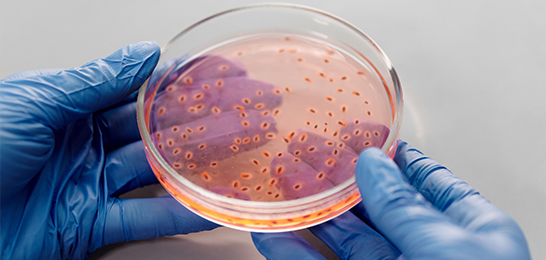Published Date: Oct 19 2023
In the intricate web of biological processes and medical research, recombinant human epidermal growth factor (rhEGF) shines as a star player with the potential to revolutionize healthcare. This protein, known for its role in cell growth, tissue repair, and wound healing, has captured the attention of scientists and clinicians alike. In this blog, we will embark on a journey through the world of rhEGF, uncovering its significance, applications, and its promising trajectory in medical advancements.
Essence of Recombinant Human Epidermal Growth Factor
At its core, rhEGF is a small but mighty protein that carries the responsibility of orchestrating cellular growth and division. This multifaceted molecule plays a crucial role in both physiological and pathological processes, making it a prime target for medical exploration.
The Art of Genetic Engineering
The production of rhEGF is an exquisite blend of biology and technology, led by the art of genetic engineering. The gene encoding human epidermal growth factor is isolated, manipulated, and integrated into host organisms, often bacteria or yeast. Through this process, these organisms become factories for producing rhEGF. This technique ensures a controlled and scalable supply of the protein, facilitating its use in research and clinical applications.
A Glimpse into the Applications
One of the most promising arenas for recombinant human EGF is wound healing. With its ability to accelerate cell growth and tissue repair, rhEGF holds the potential to transform the way we address wounds, injuries, and surgical incisions. By promoting cellular proliferation, migration, and differentiation, it can lead to faster healing times and improved outcomes. Beyond wound healing, rhEGF has caught the attention of the cosmetic and dermatology industries. Its role in promoting skin cell renewal and collagen production has sparked interest in using it for anti-aging treatments, scar reduction, and skin rejuvenation. The protein's ability to enhance skin health could redefine beauty and skincare approaches.
Peering into the Future
The potential of recombinant egf in cancer research is a captivating realm that holds promise for targeted therapies. Its involvement in cell proliferation raises intriguing possibilities for inhibiting tumour growth. However, these possibilities are accompanied by challenges and complexities that require thorough exploration. The future of medicine could see rhEGF playing a pivotal role in tissue engineering and regenerative medicine. By combining its growth-promoting properties with advanced biomaterials, researchers are striving to create functional tissues and organs for transplantation, addressing the global organ shortage.
The recombinant human epidermal growth factor has set the stage for groundbreaking medical advancements. Its applications, from wound healing to cancer research and tissue engineering, highlight its diverse potential. As we tread further into the realm of genetic engineering and biotechnology, rhEGF stands as a beacon, guiding us toward innovative treatments, enhanced well-being, and a future where medicine is propelled by the power of proteins.
Hot products by G-Biotec:
Palmitoyl tripeptide-1
Yeast-based probiotics
Pentapeptide 4








